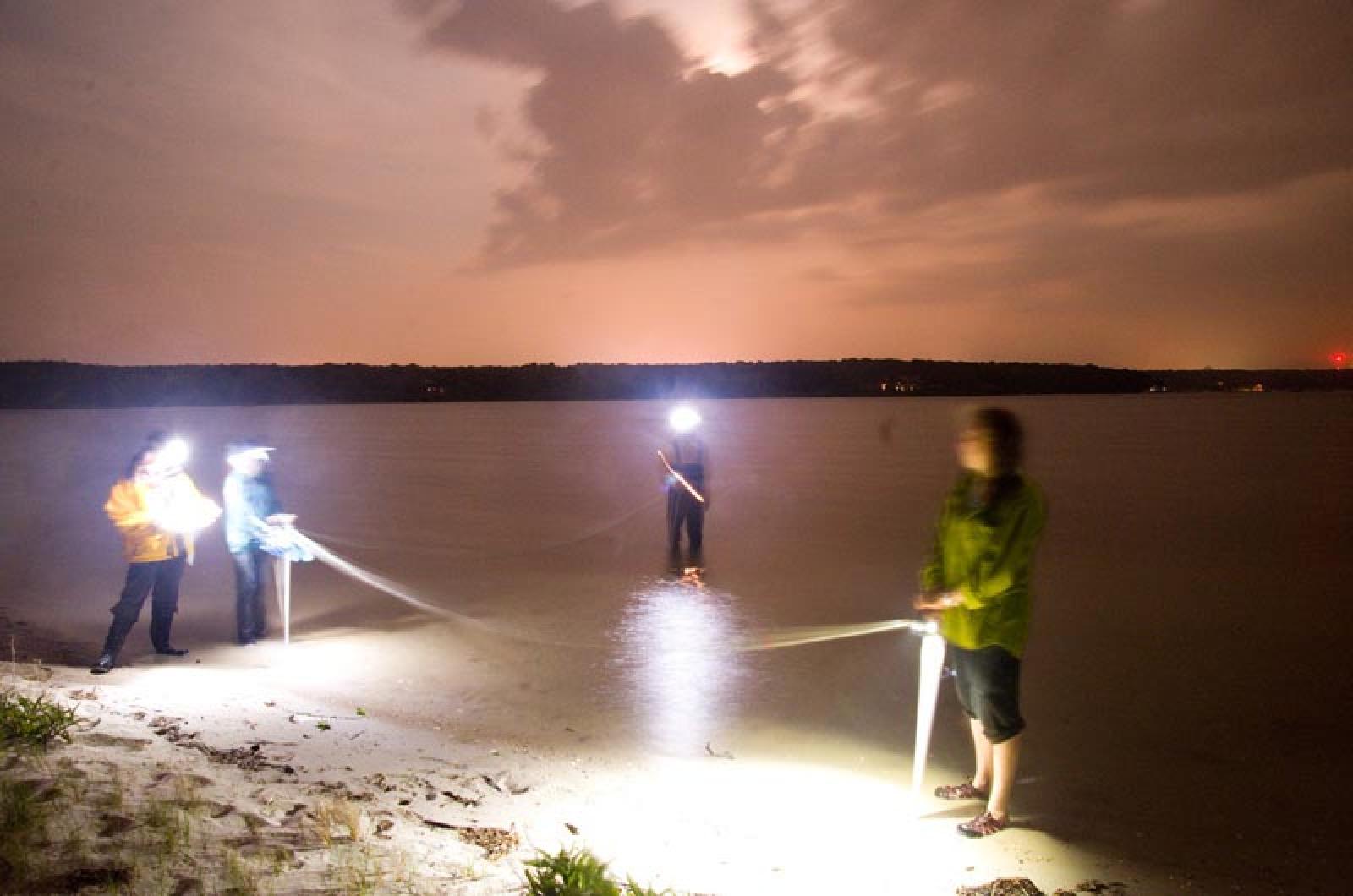At approximately 11:30 p.m. on Tuesday, June 25, the tide in Lake Tashmoo reached its highest point and began to roll back. Susie Bowman, a naturalist and teacher at Mass Audubon’s Felix Neck wildlife sanctuary, was there to mark the change with her husband, Woody. After Mrs. Bowman marked the tide’s apex, she began measuring out five-meter by five-meter quadrants in which they would search for pairs of mating horseshoe crabs. This is the couple’s fifth year of horseshoe crab surveying at Lake Tashmoo.
The survey comes as part of an effort by the Massachusetts Division of Marine Fisheries to keep track of horseshoe crab populations, a task easier said than done considering the horseshoe crab’s unique mating patterns. The problem, according to Mrs. Bowman, is that a female horseshoe crab takes nine years to reach sexual maturity and a male horseshoe crab takes 10. As a result, it can be challenging to keep track of the population’s growth or decline because the effects of a bad year of spawning will not be felt until much later.
The first census of breeding horseshoe crabs took place in 1990 in Delaware in an effort to support conservation of the endangered species.
“All the anecdotal evidence points to the fact that there are fewer crabs,” Mrs. Bowman said. “As much as I’d like to say that the crab numbers are falling, I, as a scientist can’t draw any conclusions yet. We have to do research over a number of years.”
According to Mrs. Bowman, horseshoe crabs are used to bait conch traps and the Island’s growing conch fishery has placed added pressure on the crab populations. She said that although conchs do not traditionally eat horseshoe crab, it serves as enticing and effective bait. As more and more fishermen switch to conch, demand for horseshoe crabs continues to grow.
Horseshoe crabs will crawl ashore at high tide during the full moon of May and June to spawn, making them easy targets for conch fishermen in search of bait. Their peculiar spawning habits also leave them vulnerable to other external threats, such as erosion. Mrs. Bowman said she fears that the combination of high demand, environmental factors and the time it takes for crabs to mature will cause the populations to diminish rapidly.
“In a place like Katama Bay, if you overfish these species, it will be a very long time before these species are restored,” she said.
Lisa Epstein and her daughter Isabel Littlefield accompanied Mrs. Bowman and her husband as they surveyed the Tashmoo shoreline. Ms. Epstein and her daughter learned about the survey through Felix Neck’s Citizen Science project, which seeks to involve the general public in a variety of conservation efforts. Over the course of Mrs. Bowman’s years of surveying, she has sent 45 volunteers on 89 surveying trips to the beach. Data from 32 of these trips has been reported back to the Department of Marine Fisheries.
Mrs. Bowman said that she’s not working to stop the horseshoe crab fishery. Instead, she wants to promote a more sustainable fishery — one that allows horseshoe crabs to be utilized by fishermen without forcing them into extinction.
“We need to find a level of sustainability for these crabs,” Mrs. Bowman said. “If we can’t, we will have to take more drastic measures.”








Comments
Comment policy »